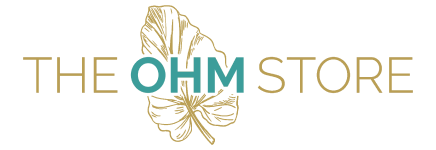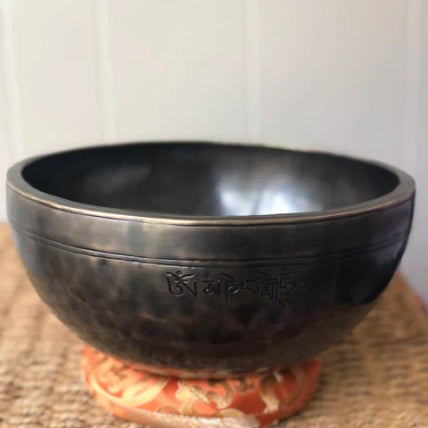Dr. Mitchell L. Gaynor's seminal book – "The Healing Power of Sound" explores how sound, voice, and music can promote healing and transformation.
In an age where stress and chronic illness are pervasive and seemingly ubiquitous, more people are being open to non-traditional ways of managing their wellness and health. Sound is one of these modalities that is drawing more and more interest.
You already understand the power of sound – consider the score to a movie or a play. Rather than being mere background noise, the score of a music often direct the viewer how to feel and react emotionally to what’s happening on the screen. The same is true of music’s impact on our emotional state, we can ride the roller coaster of the chords, melodies and rhythms that we pipe into our ears.
Drawing from both scientific research and ancient practices, this article shares key takeaways, offering evidence-based insights and practical steps to help you harness the healing power of sound in your everyday life.
1. Sound as a Tool for Healing and Transformation
Dr. Gaynor explains that sound has profound healing capabilities that can positively affect both the mind and body. Sound therapy can help manage stress, alleviate pain, and promote overall well-being.
"Sound can reduce stress, enhance relaxation, and promote a sense of peace, which are crucial for healing."
This idea is further supported by scientific studies; research published in the Journal of Advanced Nursing found that listening to music significantly reduces chronic pain and depression. Additionally, a study in Trends in Cognitive Sciences highlighted how rhythmic auditory stimulation can improve motor function in stroke patients.
To benefit from sound healing, there are options. You can attend a local sound bath session where a practitioner uses gongs, crystal singing bowls, or Tibetan singing bowls to create immersive sound experiences. Wellness centers and yoga studios often offer these sessions. Alternatively, create your own sound bath at home. Fill a room with a variety of sound instruments such as tuning forks, chimes, and bowls. Spend 20-30 minutes lying down, letting the sounds wash over you. Curating a playlist of therapeutic music designed to promote relaxation and healing is another excellent method. Look for tracks featuring nature sounds, binaural beats, or solfeggio frequencies and play this playlist during meditation, yoga, or before bedtime.
2. The Role of Voice in Healing
Gaynor highlights the power of the human voice in healing. Chanting and vocal toning can produce vibrations that resonate through the body, helping to release blocked energy and restore balance.
"When we chant or tone, the vibrations resonate within our bodies, reaching deep into our cells and helping to unlock blocked energy."
This concept is supported by findings from the International Journal of Yoga, which showed that chanting "Om" can synchronize brain activity and promote a state of calmness.
To incorporate vocal healing into daily life, experiment with a daily chanting practice (don’t worry about sounding good, the vibrations you generate will do their work even if you’re off key). Choose a simple mantra like "Om" or "Aum," and chant it for 10-15 minutes each morning. Focus on feeling the vibrations in your body. Vocal toning can also be effective; engage in vocal toning by humming or making elongated vowel sounds (e.g., "Aaaa," "Eeee," "Oooo") for 5-10 minutes daily. Pay attention to how different tones resonate in different parts of your body. Additionally, singing along to your favorite songs, especially those with uplifting and positive lyrics, can be a simple yet powerful form of vocal healing. Jonathan Goldman has even shown that simple humming can raise your personal vibration.
3. Sound and Meditation
The book emphasizes the synergy between sound and meditation. Sound can deepen meditative states, making it easier to achieve a calm and centered mind.
"Sound can serve as a powerful focal point in meditation, helping to quiet the mind and deepen the experience.”
This is corroborated by research in Frontiers in Psychology, which found that sound meditation practices, such as listening to singing bowls, can reduce tension, anger, and fatigue while increasing a sense of spiritual well-being.
Integrate sound into your meditation routine by using guided sound meditation apps like Insight Timer, Calm, or Headspace, which offer sessions incorporating sound elements like Tibetan bowls or nature sounds.
Listening to binaural beats using headphones during your meditation sessions is another effective technique (use brain.fm)
Choose frequencies associated with relaxation and deep meditative states, such as theta or delta waves. Additionally, using a Tibetan singing bowl at the beginning and end of your meditation practice can enhance the meditative experience. Strike the bowl and listen to the resonating sound as you settle into your meditation.
4. Scientific Basis for Sound Therapy
Dr. Gaynor provides scientific evidence supporting the efficacy of sound therapy. He discusses how sound waves can influence cellular processes and promote physical healing.
"Scientific research has shown that sound waves can influence cellular structures and even genetic expression, leading to physical healing.”
This view is supported by studies like those published in Nature Reviews Neuroscience, which show that sound and music can stimulate neuroplasticity and aid in recovery from neurological conditions.
To leverage the scientific benefits of sound therapy, explore frequency-specific microcurrent therapy (FSM) devices, which use low-level electrical currents to stimulate healing. Consult a healthcare professional to find reputable devices and proper guidance. Additionally, using apps like "Solfeggio Frequencies" or "Sound Healing Frequencies" that generate specific healing frequencies can be beneficial. Experiment with different frequencies and notice how they affect your mood and physical state. Booking sessions with a certified sound therapist who uses instruments like tuning forks or crystal bowls to target specific areas of your body can also facilitate healing.
5. Personal Empowerment Through Sound
Gaynor encourages readers to take an active role in their healing journey using sound.
"You have the power to influence your own health through the conscious use of sound. This is a tool that anyone can learn to use.”
This empowering message is supported by various holistic health approaches that emphasize self-care and personal agency, as discussed in The Journal of Alternative and Complementary Medicine.
Begin by establishing a daily routine that includes sound therapy. Dedicate 15-30 minutes each day to engage in any sound practice that resonates with you, such as listening to healing music, chanting, or using a singing bowl.
Learning to play a simple instrument like a drum, flute, or even a kalimba can be both therapeutic and empowering.
Regularly playing an instrument can enhance your sense of well-being and emotional balance. Keeping a sound journal to track your experiences with different sound therapies is another effective practice. Note how each practice affects your mood, energy levels, and physical health. Use this journal to refine and personalize your sound healing practices.
By embracing sound therapy, you can transform your health and well-being in profound ways. Whether through the vibrations of a Tibetan singing bowl, the power of your own voice, or something electronic like binaural beats, sound provides an accessible path to healing. As you integrate these practices into your daily routine, you'll not only alleviate stress and promote physical healing but also foster a deeper connection to your inner self.










